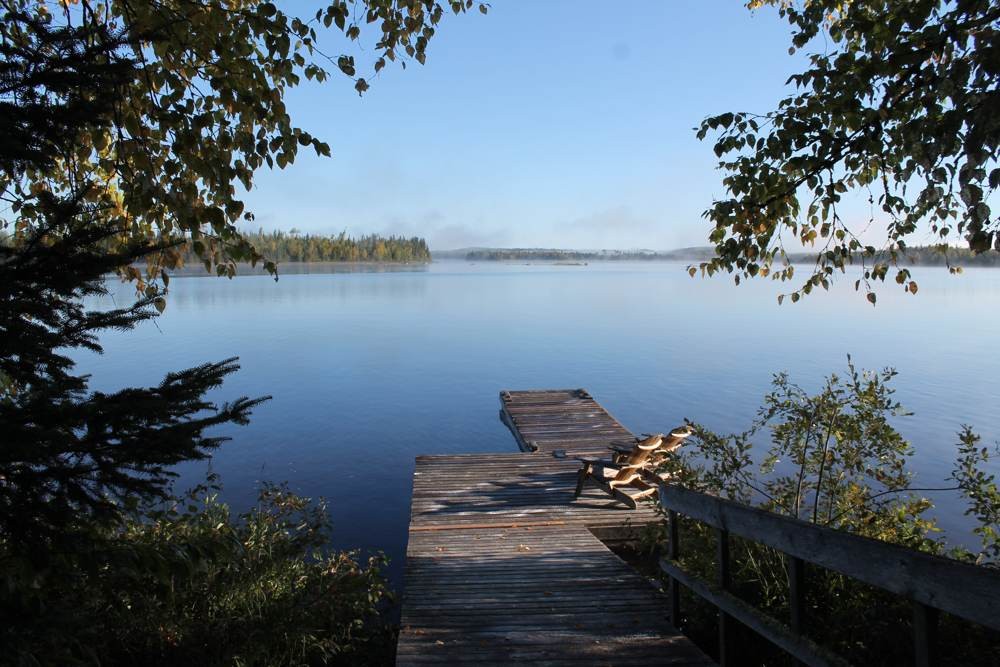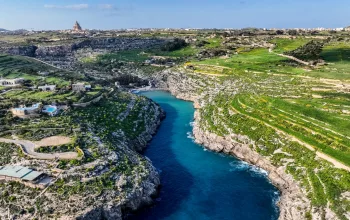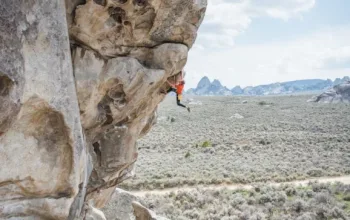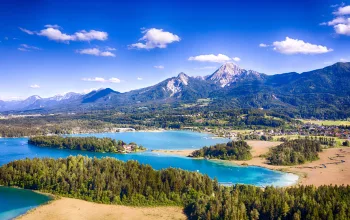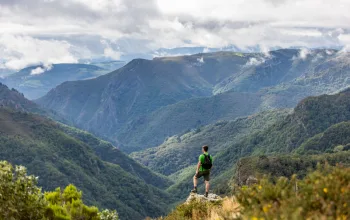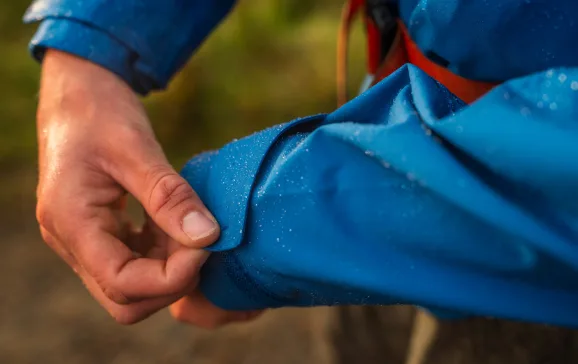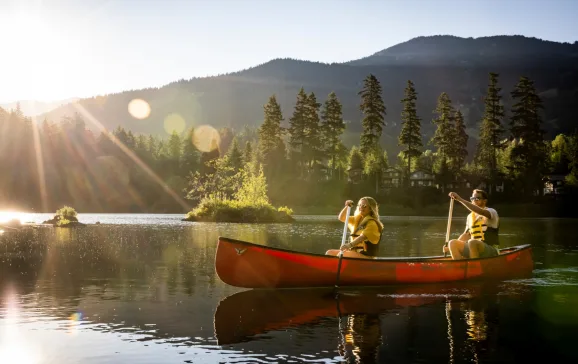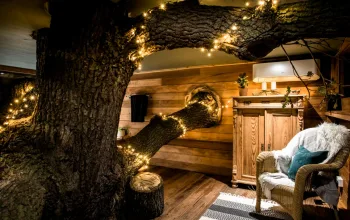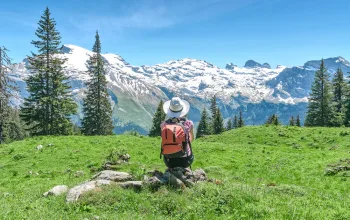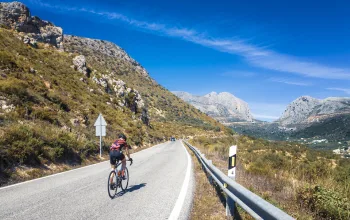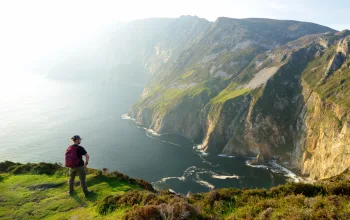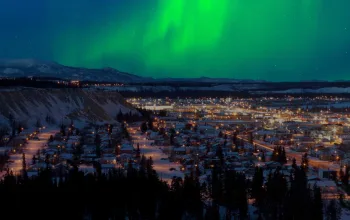There are only a few ways in and few ways out of the vast natural landscape of Canada’s northern Ontario, and therein lies its enduring appeal.
During the warm days of summer this water-laden wilderness – said to contain a third of the world’s supply of fresh water – quickly shrugs off the sub-zero chill of winter and becomes a gigantic adventure playground where you can hike, bike, paddle, sail or marvel at the amazing wildlife.
Just getting here is an adventure in itself. From the city of Sault Ste Marie, an hour and a half’s flight north-west of Toronto on the shore of Lake Superior, we climb aboard a lumbering passenger train for
a slow, meandering and scenic journey through a wooded landscape of rivers and canyons.
The sombre notes of the train’s horn echo off rock walls and across ancient forest as the locomotive rumbles northwest into Agawa Canyon – a day’s tour in its own right. From there, the Algoma Central Railway line calls at isolated settlements like Hawk Junction, and remote request stops as it skirts the Chapleau Wildlife Reserve.
We jump off at Wabatong, a small outpost 206 miles up the line, and transfer to a wooden launch that ferries us through the fading light to the cosy family-run Errington’s Wilderness Island Resort on a remote island on the 10,000 acre Lake Wabatongushi.
There we’re met by Al and Doris Errington with
a friendly greeting and a crackling log fire. A huge roast dinner is followed by homemade blueberry pie, before we’re guided to lakeside cabins, where wood burners blaze into the night, while outside, stars wink in the purity of the blackness above. From the jetties of the cabins there is even a chance of seeing the Northern Lights – but we’re out of luck this time.
Summer is bright but short-lived and even by September, beautiful mornings can offer a frosty start before the sun rises to burn off the mist. But once it does, it reveals a glorious blue sky. The light here is really is exceptional – a photographer’s dream.
The bonus is that you see everything twice: the rocky ledges, river banks, trees and rotting logs are all perfectly mirrored in the stillness of the water’s surface. Only the splutter of a distant engine, the shriek of an eagle overhead or the splash of a fish being hooked out of the water interrupts the silence.
At Errington’s, fishing for walleye, pike or perch from wooden boats (see panel) and wildlife watching are the main activities. Across this part of Northern Ontario the neighbours are black bear, moose, mink, golden eagle, loon ducks and turkey vulture.
During our stay, we enjoy hikes through boreal forest near locations with names such as Eagle Bay and Black Rock – where white pine, spruce and silver birch grow over a carpet of jade-green lichen, or Long-time No-see-Um Bay – which gets its name simply from being the remotest point of the lake.
|
||
250,000 lakes |
More than 30,000 islands in Georgian Bay alone |
33% of the world’s freshwater is in Ontario’s lakes |
Flowing into Wabatongushi is the Debden River and a journey along its meandering course takes you into an ancient landscape of tree-lined banks, past carefully constructed beaver lodges, where our eyes dart from side to side in the hope of seeing a moose.
Our guides enthusiastically demonstrate their skill at the moose call of low nostril, throaty tones, but they are elusive beasts and their numbers are only now slowly beginning to recover.
Absent moose notwithstanding, wildlife is all around and has to be taken seriously, in particular the black bears that roam the woodlands. As our boat skims across the lake after a forest hike, we pause at ‘Bear Point’ to be treated to the sight of a female black bear enjoying a ‘ready meal’, courtesy of the resort’s kitchens, vultures hovering patiently overhead.
Bobbing safely offshore on our wooden boat, we watch enthralled, as just a few yards away the huge black female bear eats her way through a mountain of food, eyeing us cautiously every so often before returning to the feast.
Mid-morning the next day, a different tone drifts over the lake; the drone of aero engines getting louder across the sky until a few moments later a pair of seaplanes lands on the previously glassy waters of Wabatongushi to take us on the next leg of our journey to Killarney, 100 miles or so back east.
Loaded up and strapped in, we head out across the water, until the pilot opens the throttle wide and we lift clear or the water for a bird’s-eye view of this immense landscape of lakes and forest.
Flying over Northern Ontario at 5,000ft, you truly begin to appreciate the extent of the lakes, some 250,000 of them. Water, islands and forests create impressive patterns across the entire landscape.
An hour later, we land smoothly on the waterway beside the Killarney Mountain Lodge. This comfortable resort looks out on an area that’s hugely popular for cycling and hiking along well-marked trails on the shore overlooking Georgian Bay.
By anything but Canadian standards this is a huge body of water, that disappears into the hazy distance towards the many times bigger Lake Huron. Here, the terrain is different to the parts of Northern Ontario that we’ve seen so far; rockier and of pink granite.
You can take a boat out into Georgian Bay - so big itself that it is often regarded as the sixth great lake - and view the seemingly endless shoreline.
Just inland are the lakes of Killarney Provincial Park with their high rock walls and wilderness should you wish to spend an afternoon lazily paddling a two-man canoe.
It’s impossible to overstate the sheer escapism felt immersing yourself in this vast landscape.
But trundling in aboard a meandering slow train, and then flying out in a water-skimming seaplane provides an unforgettably contrasting entrance and exit that truly underlines the expansive remoteness of Northern Ontario.



